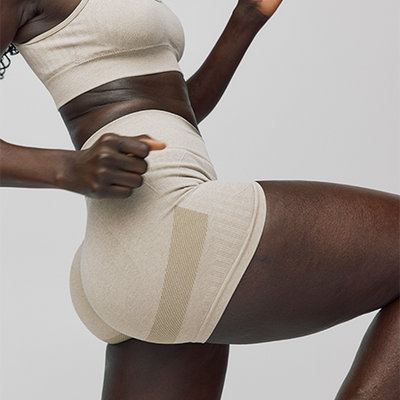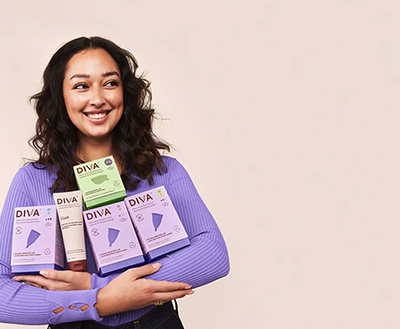
In this article /

It’s a cold, rainy Saturday morning in March. Peach sits across from us, fidgeting slightly with the cuff of her sweater. She is quiet, but there’s an expression in her eyes that suggests she has stories that could fill hours.
‘Peach’ is a nickname that she’s inherited from her friends at a local women’s shelter, where she’s been staying for the last few weeks. Peach is currently experiencing homelessness in Toronto, and it’s an ongoing battle for her to find shelter and accommodations.
We ask Peach how she deals with her period each month while experiencing homelessness. She shrugs. “It’s stressful,” she says. “I don’t know how else to describe it.”
Peach goes on to explain the lengths she has gone in order to access the products necessary to manage just one day of her period while living on the streets. “One time, I was panhandling, and I had a sign that said ‘spare tampon’ because I needed one… Sometimes, I think about just going into a store and stealing like one or two…But I don’t do it, because my conscience will not leave me alone.”
Peach’s story is humbling, to say the least. It’s horrible to think that anyone experiencing homelessness would be unable to access products that are deemed a monthly necessity. Sadly, there are thousands of people experiencing homelessness and/or poverty in North America who are unable to access menstrual products because they simply can’t afford them, and shelters or community drop-ins rarely have enough supplies. In fact, menstrual products are some of the most frequently requested items in shelters, but the least frequently donated.
What is Period Poverty?
Chatelaine estimates that menstruators in Canada spend roughly $66 a year on menstrual products alone — this does not include the cost of additional items often required to manage mid-cycle spotting or fluid, pain medication or spare underwear. For many people experiencing homelessness or severe financial hardship, this cost is prohibitive and as a result, they experience period poverty.
Period poverty describes the inability to access menstrual products because of financial constraints. In Toronto alone, there are over 22,000 vulnerable people in need of menstrual products.
How do we stop period poverty in our community?
Period poverty is complex because it often contributes to the factors that perpetuate the cycles of poverty and marginalization.
For example, if someone is unable to afford menstrual products, their period may prevent them from going to work or school, attending interviews or participating in community programs, which subsequently hinders their ability to use these opportunities to change their situation of homelessness or poverty.
In order to eliminate period poverty, we need to establish menstrual equity. “Menstrual equity” refers to creating equal access to menstrual hygiene products and reproductive education for all people who experience periods regardless of their financial constraints or other barriers they may experience.
How do we achieve menstrual equity?
We can achieve menstrual equity by first starting a conversation about the topic, as menstrual equity requires involvement from the community, businesses and all levels of government.
For example, Diva has become an industry leader in the advocacy for menstrual equity through its support of community initiatives that provide people living in shelters who menstruate and have access to bathroom facilities, with access to menstrual products.
By starting a dialogue between business leaders, politicians and community advocates, we can raise awareness about how life-limiting period poverty truly is and encourage the development of policies and resources that will ensure all people who menstruate are able to access the products they need.
Whether you’re new to the issue of period poverty, or a seasoned advocate, we invite you to help us create change and establish menstrual equity in Toronto by supporting This is Period Poverty – a campaign created and produced by Winslow Magazine to raise awareness about period poverty in Toronto, Canada’s largest city, by highlighting the stories of individuals who have experienced period poverty in our community.
You can help promote menstrual equity in Toronto by helping us meet our fundraising goal of $5,000 in support of The Period Purse. The Period Purse is a non-profit organization that seeks to establish menstrual equity through outreach, education and advocacy. To date, The Period Purse has supplied products to support over 18,981 periods.
Help share the conversation using #ThisIsPeriodPoverty and follow the campaign on Winslow Magazine, Instagram, Twitter and Facebook. You can also follow along on DivaCup’s social handles at @thedivacup on Instagram, Twitter and Facebook.















